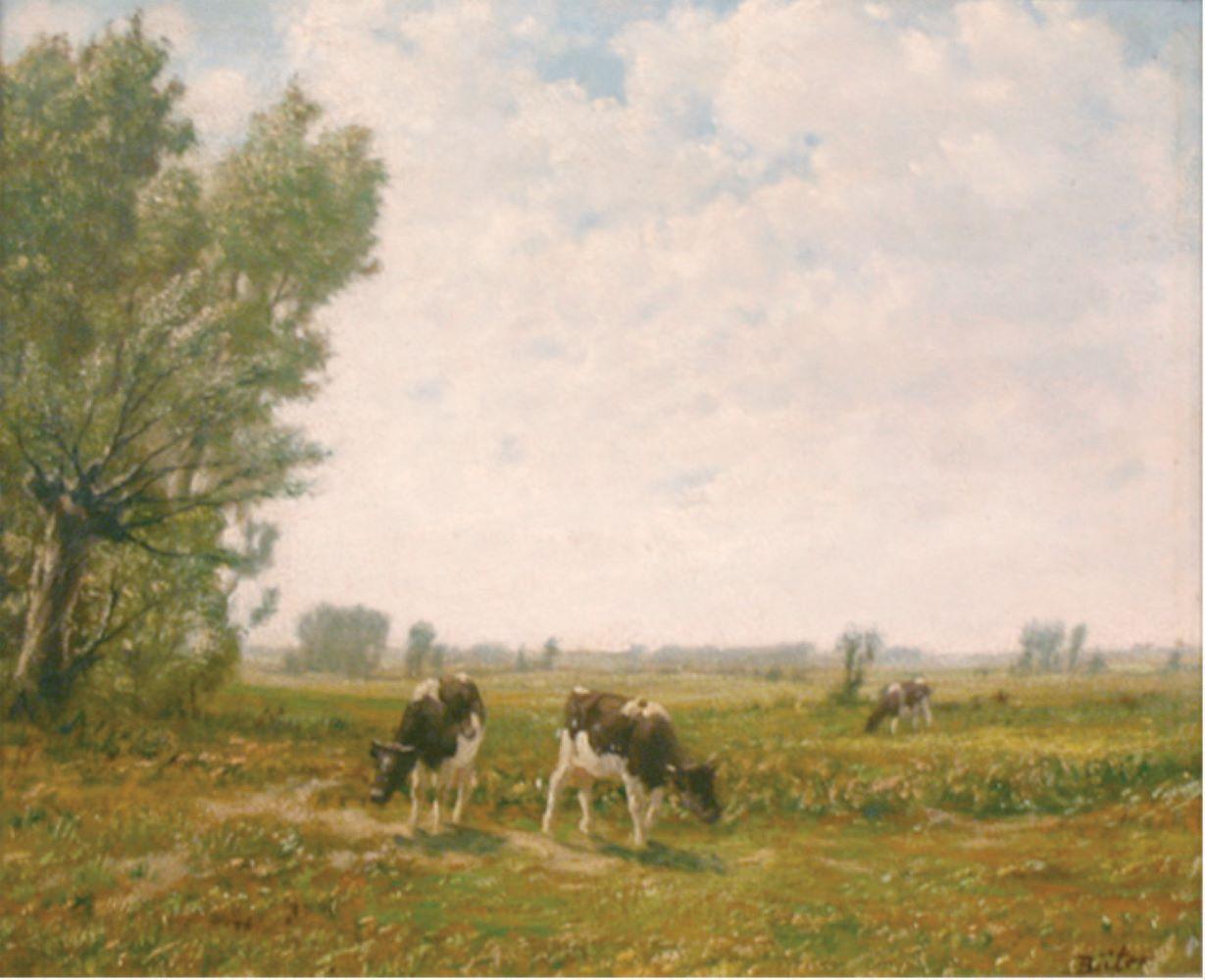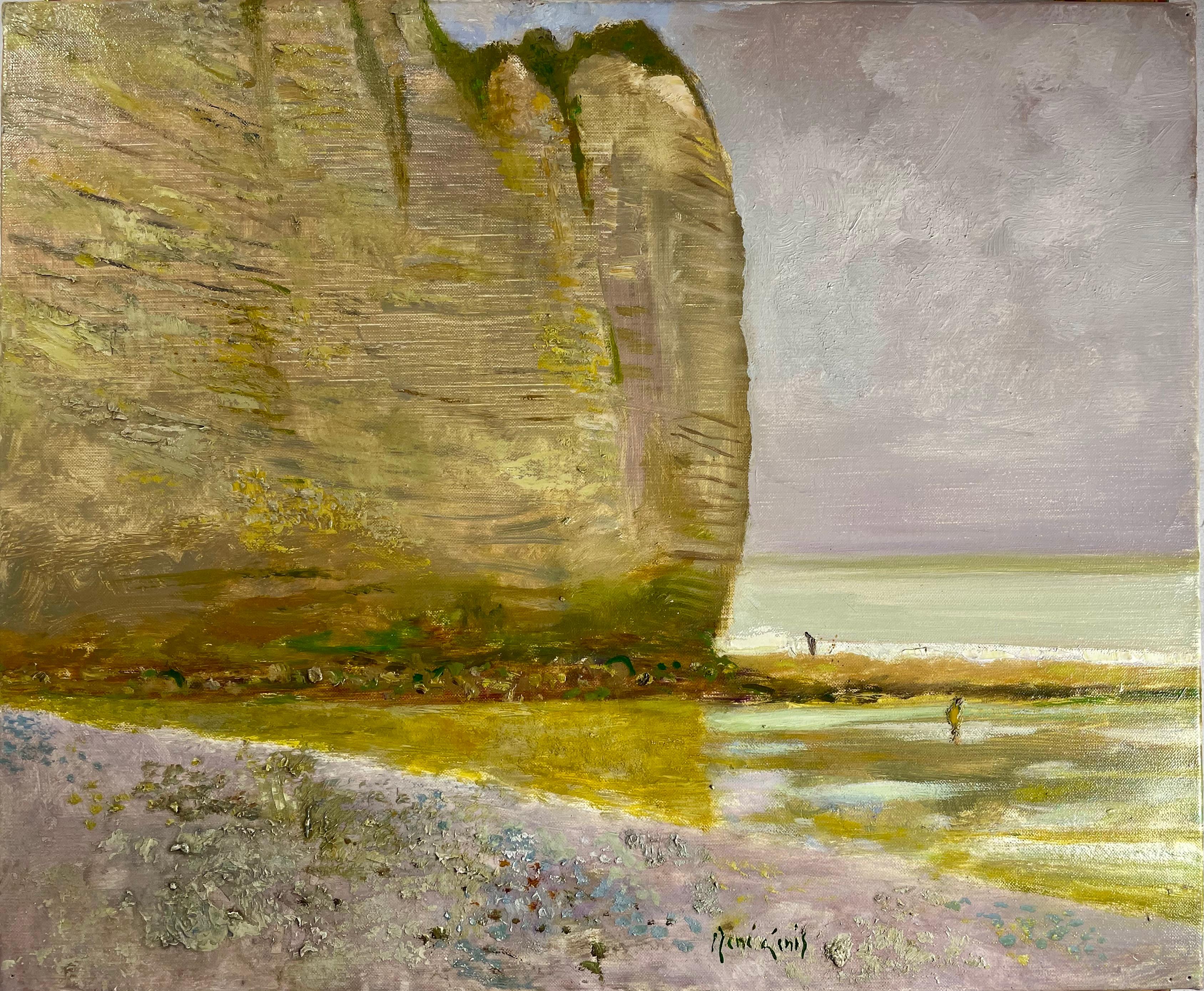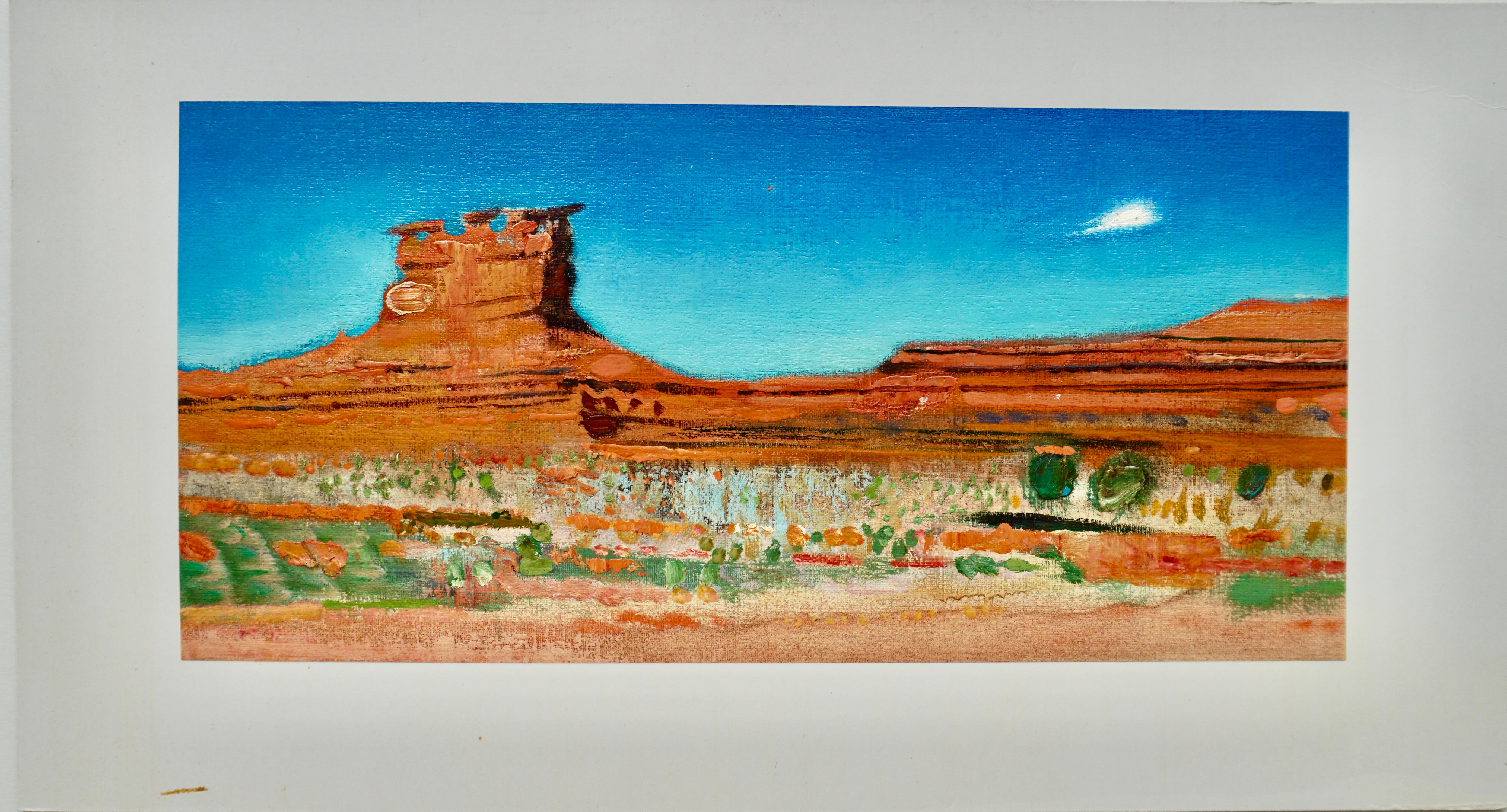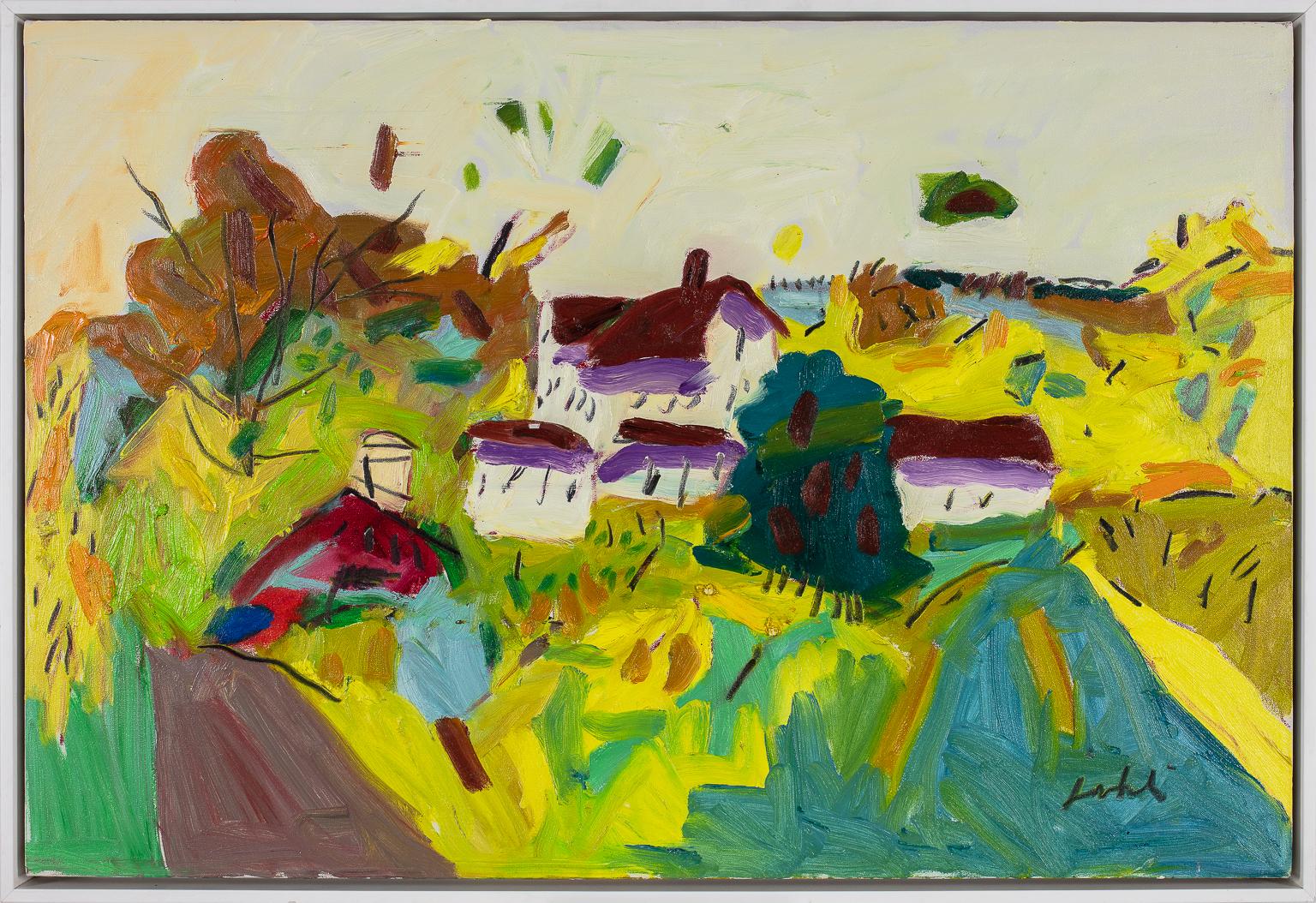Items Similar to Marina con burrasca Dipinto Mathieu van Plattenberg, detto Monsù Montagna
Want more images or videos?
Request additional images or videos from the seller
1 of 8
Marina con burrasca Dipinto Mathieu van Plattenberg, detto Monsù Montagna
About the Item
Mathieu van Plattenberg, detto Monsù Montagna (Anversa, 1608-Parigi, 1660), attr.
Burrasca con velieri
Olio su tela, cm 62,5 x 98
Cornice, cm 87,5 x 122 x 8
Affasciante marina che va ad arricchire il catalogo di Matthieu Plattenberg, meglio noto come Monsù Montagna. Roboanti nuvole incombono sulle onde dal guizzo graffiante, in un turbinio pittorico di vento e salati scrosci di spuma marina. Con straordinaria destrezza formale l’artista materializza il buio smeraldo delle profondità marine, pronte ad inghiottire la manciata di velieri sferzati dal vento; massimo verismo viene raggiunto nel dettaglio dell’acqua che si frantuma in nebulose goccioline sugli scogli, sulla destra del dipinto. La commistione figurale di questi elementi appartenne all’intera produzione del Plattenberg, menzionato già nella Felsina pittrice del Malvasia (1678), quindi nella Storia pittorica dell’Italia dell’abate Luigi Lanzi (1792-1809). È a questo trattato che occorre ricondurre una nodale confusione identitaria, eccellentemente sciolta dalla monografia di Roethlisberger (Bianco, Cavalier Tempesta and his Time - University Delaware Press, Delaware, 1970). Il Lanzi suppose corretto identificare nel “Montagna”, citato da diverse fonti prima di lui, un olandese pittor di mare che finì per essere nominato, successivamente, come Renaud de la Montagne. La pubblicazione del Roethlisberger dimostrò che nel Montagna fosse invece da riconoscersi l’artista fiammingo Matthieu Plattenberg, nato ad Anversa nel 1608. L’artista prese il soprannome da Andries van Eertvelt, incisore e disegnatore di ricami presso cui svolse l’apprendistato giovanile; soggiornò nella penisola italiana attorno ai vent’anni, al seguito del maestro, raggiungendo la città di Firenze. Qui Plattenberg non fu collaboratore di Jan Asselijn, come spesso scritto: negli anni fiorentini di Asselijn, tra il 1635 e il 1644, il Montagna si trovava a Parigi, raggiunta attorno al 1630. L’artista si dedicò alla prolifica realizzazione di marine tempestose, alle volte firmate Montagne, Montaigne o Platte-Montagne; partecipante alla fondazione dell’Académie Royale de Peinture et de Sculpture a Parigi nel 1648, amò definirsi per l’interezza della sua vita, a ragione, “Peintre du Roy pours les mers”. Pari a lui, successivamente, solo Pieter Mulier, soprannominato per l’appunto Cavalier Tempesta; sebbene più classicheggiante, al Mulier furono talvolta attribuiti dipinti del Plattenberg, persino già dai tempi del Lanzi. Una sorte simile toccò al figlio del Montagna, noto alle fonti come Nicolas de Plattemontagne, attivo a Parigi e alla decorazione delle Tuileries; anche le opere di Nicolas furono per lungo tempo erroneamente attribuite al suo maestro, Philippe de Champaigne. Si rammenti come persino Evaristo Baschenis, noto pittore-sacerdote bergamasco, possedesse opere del Montagna: fervido collezionista di opere contemporanee, Baschenis affiancava a questo fiammingo alcune perle del romano Ciro Ferri, del trentino Andrea Pozzo e del cremasco Gian Giacomo Barbelli, suo antico maestro, come si evince da una nota testamentaria.
L’evidente paternità del dipinto si palesa nel confronto con altre Scene di tempesta eseguite dall’artista: si ricordino, oltre agli esempi dislocati in collezioni private, le affini tele oggi custodite presso la Camera dei Deputati di Palazzo Montecitorio, i Royal Museums di Greenwich e la Pinacoteca Tosio Martinengo dei Musei Civici di Arte e Storia di Brescia.
- Attributed to:Mathieu van Plattenberg, detto Monsù Montagna (1608 - 1660, Dutch, French)
- Dimensions:Height: 34.65 in (88 cm)Width: 48.04 in (122 cm)
- Medium:
- Period:
- Condition:
- Gallery Location:Milan, IT
- Reference Number:1stDibs: LU2639213033542
About the Seller
No Reviews Yet
Vetted Seller
These experienced sellers undergo a comprehensive evaluation by our team of in-house experts.
1stDibs seller since 2023
- ShippingRetrieving quote...Ships From: Milan, Italy
- Return PolicyA return for this item may be initiated within 14 days of delivery.
More From This SellerView All
- Battle scene Oil painting on canvas Attributed to Karel BreydelBy Karel BreydelLocated in Milan, ITAttr. to Karel Breydel, known as the Knight of Antwerp (1678 - 1733) Battle with knights and landscape in the background Oil on canvas, cm 44.5 X 36.7 Frame 52.5 x 45 cm The pain...Category
Late 18th Century Figurative Paintings
MaterialsCanvas, Paint, Oil
- Rest during the flight into Egypt Oil painting on canvas Giuseppe RoncelliLocated in Milan, ITGiuseppe Roncelli (Candia, 1663 - Bergamo, 1729) Rest on the Flight into Egypt Oil on canvas, 55 x 45.5 cm With Frame, 65 x 77 cm The painting under consideration, by Giuseppe Ro...Category
Late 17th Century Figurative Paintings
MaterialsCanvas, Paint, Oil
- Pair of landscapes Painted by Antonio Francesco PeruzziniLocated in Milan, ITAntonio Francesco Peruzzini (Ancona, 1643/1646 - Milan, 1724) Rural landscape with river and village center Rural landscape with river and tower (2) Oil on canvas, cm 108 x 62 Expert opinion Prof. Emilio Negro Recognizable in the present pair of paintings is the hand of what Mina Gregori called "the most original and path-breaking landscape painter to emerge in the late seventeenth century," namely Antonio Francesco Peruzzini. Finally identified by Arslan in 1959 as such a "Perugino," author of a St. Sebastian in a private Milanese collection, Peruzzini has in recent times been reevaluated from his former qualification as a mere subordinate of Lissandrino (Alessandro Magnasco), in comparison with whom he turns out to be an excellent coadjutor and original landscape painter. A distant mountainous horizon, of frozen vigor, is proposed in both canvases interspersed with a spindly tree in the background that screws swirlingly to the sky. The anti-academicism and nonconformism that characterized Peruzzini's entire career appear evident here and justify in retrospect his choice of such figurative collaborators as Magnasco and Sebastiano Ricci...Category
Late 17th Century Landscape Paintings
MaterialsCanvas, Paint, Oil
- View of Isola bella on Lake Maggiore canvas by Clark Van ClemensonLocated in Milan, ITClark Van Clemenson (1910- ?) Isola bella on Lake Maggiore oil on canvas, 100x160 cm with frame, 122 x 182 cm signed at lower right C. Clemenson The painting under review shows ...Category
20th Century Landscape Paintings
MaterialsCanvas, Oil
- View of St. Peter's Basilica Oil painting on canvas by Joseph BolzernLocated in Milan, ITJoseph Bolzern (1828 -1901) St. Peter's Basilica and the colonnade in front of it Oil on canvas, 53.5 × 70.5 cm with frame, 67.5 x 85 cm Signed and dated at lower left: Bolzern....Category
Late 19th Century Figurative Paintings
MaterialsOil, Canvas, Paint
- Landscape with farrier oil on canvas by Jan MielBy Jan MielLocated in Milan, ITJan Miel (Beveren-Waas, 1599 - Turin, 1663) Roman countryside landscape with farrier Oil on canvas, 114.5 x 146 cm Framed, 132 x 162 cm Published on the portal of the Nederlands ...Category
17th Century Landscape Paintings
MaterialsCanvas, Oil
You May Also Like
- Bernhard ButerLocated in Saint Augustine, FLArtist: Bernhard Buter (1883-1959) German Title: Rhinish Landscape Medium: Oil on Canvas Dimensions: Framed 19” x 21” , Unframed 11 x 13” Bernhard Buter paints agrarian landscapes i...Category
Early 20th Century Realist Landscape Paintings
MaterialsCanvas, Oil
- "Les Falaise Normande" (The Cliffs Of Normand)By René GenisLocated in Berlin, MDRene Genis (French 1922-2004) “Les Falaise Normande” / The Cliffs of Normand. A sea scape with high cliffs, the beach, and two fishermen. The cliffs are in browns, tans and olives a...Category
1990s French School Landscape Paintings
MaterialsCanvas, Oil
- "Monument Valley"By René GenisLocated in Berlin, MDRene Genis (French 1922-2004) Monument Valley. 1967. Beautiful oranges, browns, greens against a turquoise blue sky. Oil on canvas, laid on mat. Si...Category
Mid-20th Century Landscape Paintings
MaterialsOil, Canvas
- Early oil depicting the Great Fire of LondonLocated in London, GBThe Great Fire of London in September 1666 was one of the greatest disasters in the city’s history. The City, with its wooden houses crowded together in narrow streets, was a natural fire risk, and predictions that London would burn down became a shocking reality. The fire began in a bakery in Pudding Lane, an area near the Thames teeming with warehouses and shops full of flammable materials, such as timber, oil, coal, pitch and turpentine. Inevitably the fire spread rapidly from this area into the City. Our painting depicts the impact of the fire on those who were caught in it and creates a very dramatic impression of what the fire was like. Closer inspection reveals a scene of chaos and panic with people running out of the gates. It shows Cripplegate in the north of the City, with St Giles without Cripplegate to its left, in flames (on the site of the present day Barbican). The painting probably represents the fire on the night of Tuesday 4 September, when four-fifths of the City was burning at once, including St Paul's Cathedral. Old St Paul’s can be seen to the right of the canvas, the medieval church with its thick stone walls, was considered a place of safety, but the building was covered in wooden scaffolding as it was in the midst of being restored by the then little known architect, Christopher Wren and caught fire. Our painting seems to depict a specific moment on the Tuesday night when the lead on St Paul’s caught fire and, as the diarist John Evelyn described: ‘the stones of Paul’s flew like grenades, the melting lead running down the streets in a stream and the very pavements glowing with the firey redness, so as no horse, nor man, was able to tread on them.’ Although the loss of life was minimal, some accounts record only sixteen perished, the magnitude of the property loss was shocking – some four hundred and thirty acres, about eighty per cent of the City proper was destroyed, including over thirteen thousand houses, eighty-nine churches, and fifty-two Guild Halls. Thousands were homeless and financially ruined. The Great Fire, and the subsequent fire of 1676, which destroyed over six hundred houses south of the Thames, changed the appearance of London forever. The one constructive outcome of the Great Fire was that the plague, which had devastated the population of London since 1665, diminished greatly, due to the mass death of the plague-carrying rats in the blaze. The fire was widely reported in eyewitness accounts, newspapers, letters and diaries. Samuel Pepys recorded climbing the steeple of Barking Church from which he viewed the destroyed City: ‘the saddest sight of desolation that I ever saw.’ There was an official enquiry into the causes of the fire, petitions to the King and Lord Mayor to rebuild, new legislation and building Acts. Naturally, the fire became a dramatic and extremely popular subject for painters and engravers. A group of works relatively closely related to the present picture have been traditionally ascribed to Jan Griffier...Category
17th Century Old Masters Landscape Paintings
MaterialsOil, Canvas
- Autumn Landscape with PurpleBy Zygmund JankowskiLocated in Gloucester, MAZygmund Jankowski (1925–2009) painted traditional subjects with exuberant irreverence for traditional rules of color, composition, and perspective. He disparaged imitation and deligh...Category
1980s Contemporary Landscape Paintings
MaterialsCanvas, Oil
- Flat Ledge Quarry with Golden TreesLocated in Gloucester, MAFlat Ledge Quarry is one of the many granite quarries in Rockport MA, which actively produced granite for cobblestones until the early 20th century, when asphault became the preferre...Category
2010s Contemporary Landscape Paintings
MaterialsCanvas, Oil





